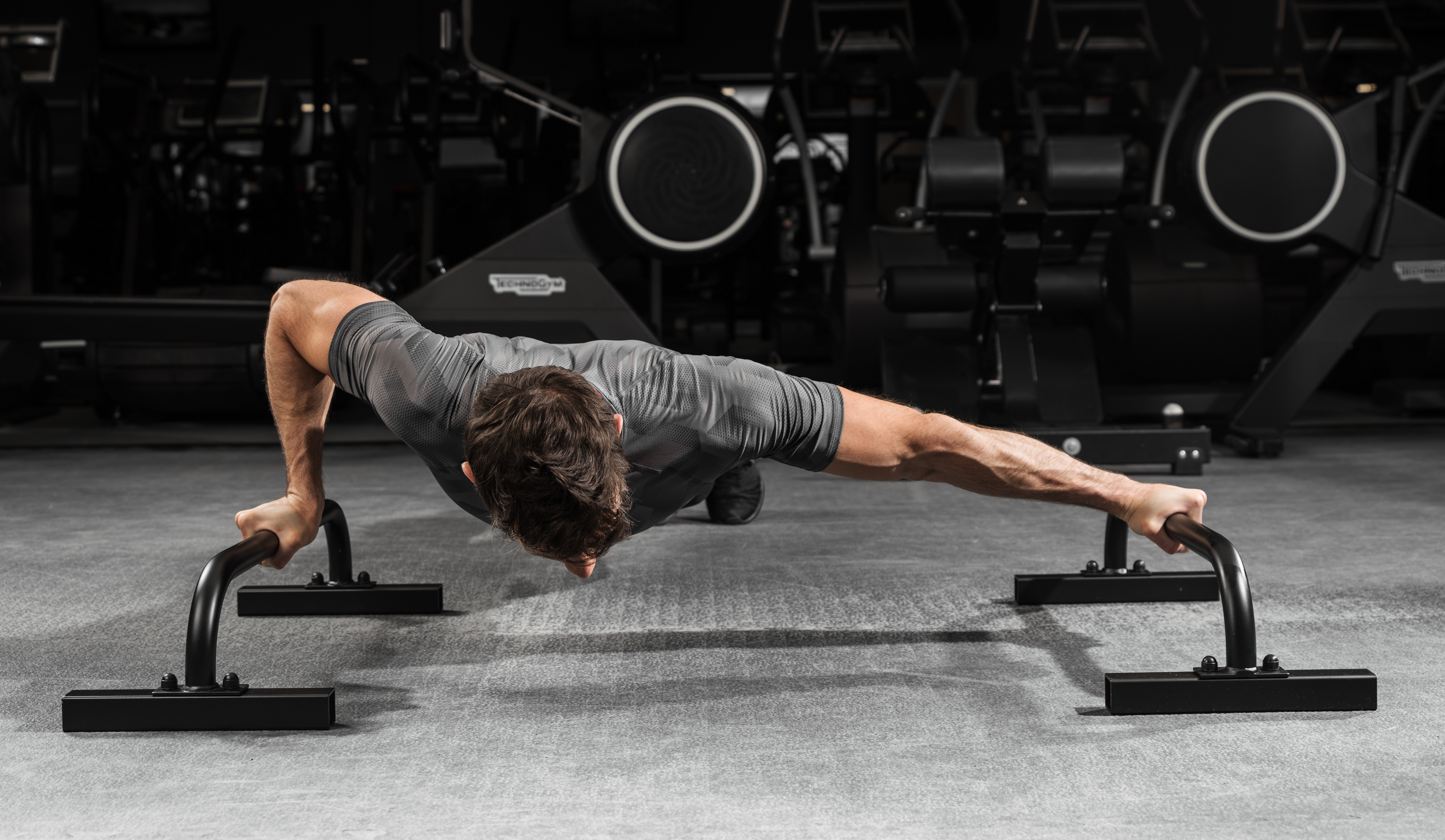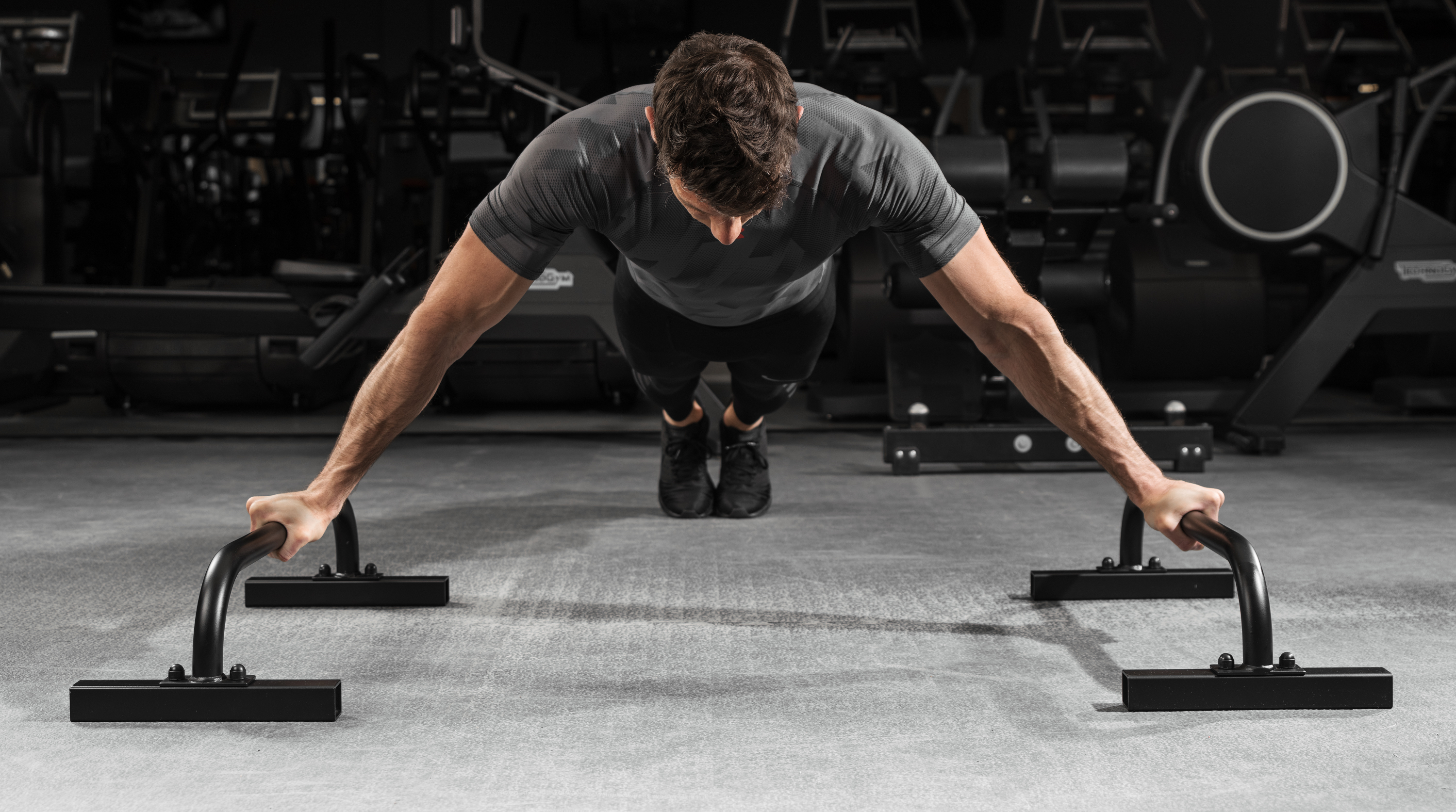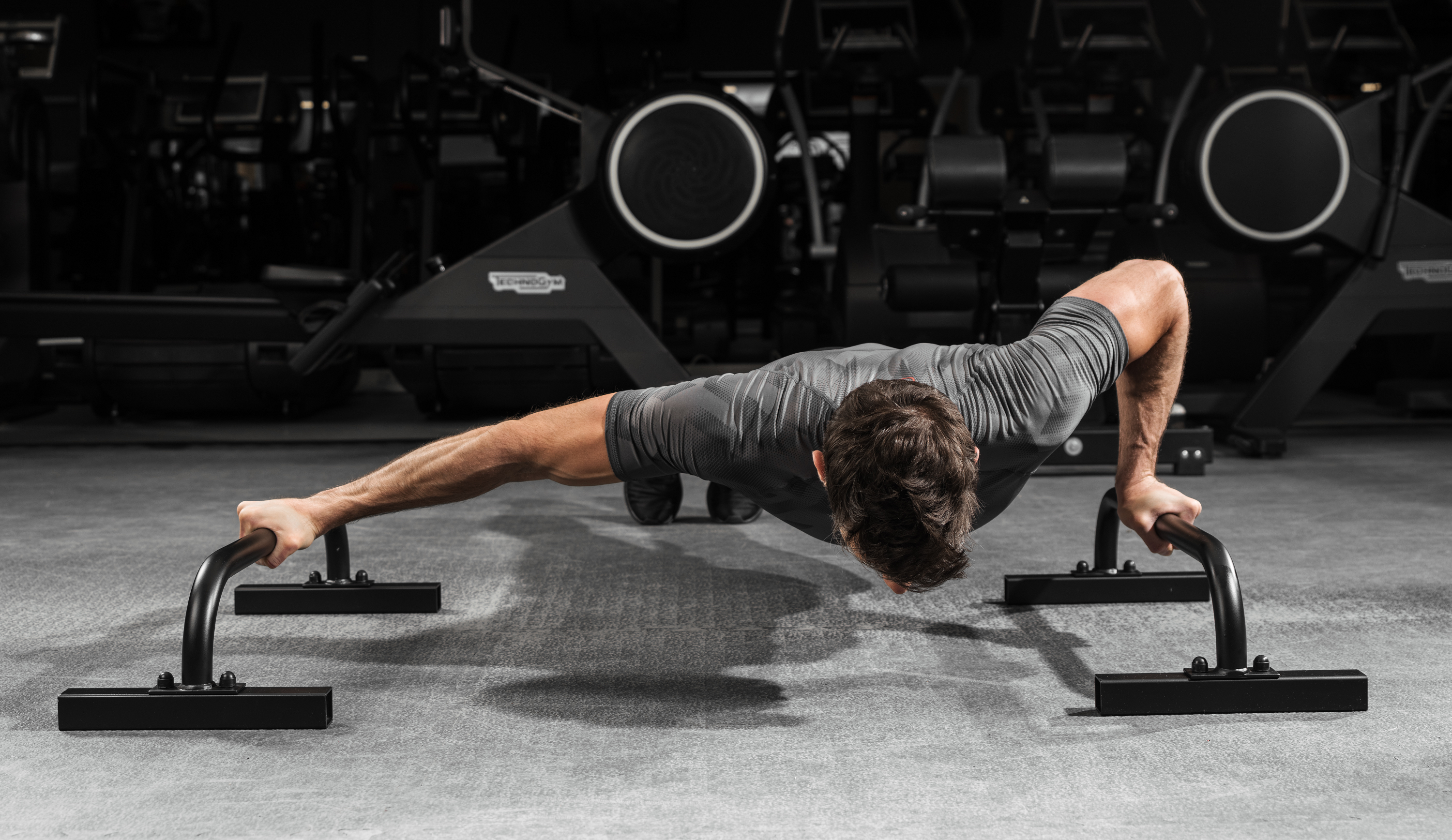There are two exercise variations, the Archer and Typewriter, which are very similar in execution. Both are extremely beneficial movements for overloading one limb whilst still activating the other. They are perfect exercises to help improve strength, endurance and mobility; helping break through plateaus or get a serious pump. The Archer and Typewriter movements are very similar, but with a few key differences. So let’s look into them.
The Archer Movement
We have already covered Archer movements in-depth here, but a quick recap. An Archer movement is one where one limb does the movement (bends/straightens), while the other remains locked. In an Archer press up, one arm bends, allowing the body to sink down, while the other remains straight, simply pivoting around the hand.



This means one limb is doing the majority of the work, while the other remains active, but under minimal load.
The Typewriter Movement
A Typewriter movement is subtly different to an Archer. During a Typewriter exercise, one limb takes the load and begins the movement, then the load is transferred to the opposite limb.
Take the press up example. During a Typewriter press up, the right arm bends and the body goes down whilst the left arm remains straight and locked. When the chest nears the floor, the weight is transferred to the left arm and taken away from the right arm. The right arm begins to straighten until the majority of the load is taken on the left arm.
The weight can then be transferred back to the right arm, press up and the rep complete. Then it’s time for the left arm to bend first.
The difference between Archer and Typewriter movements.
The transfer of load from one limb to the other at the mid-point of the exercise. This places a lot of stress on the muscles, and can be a very good way of building strength within the range of motion.

